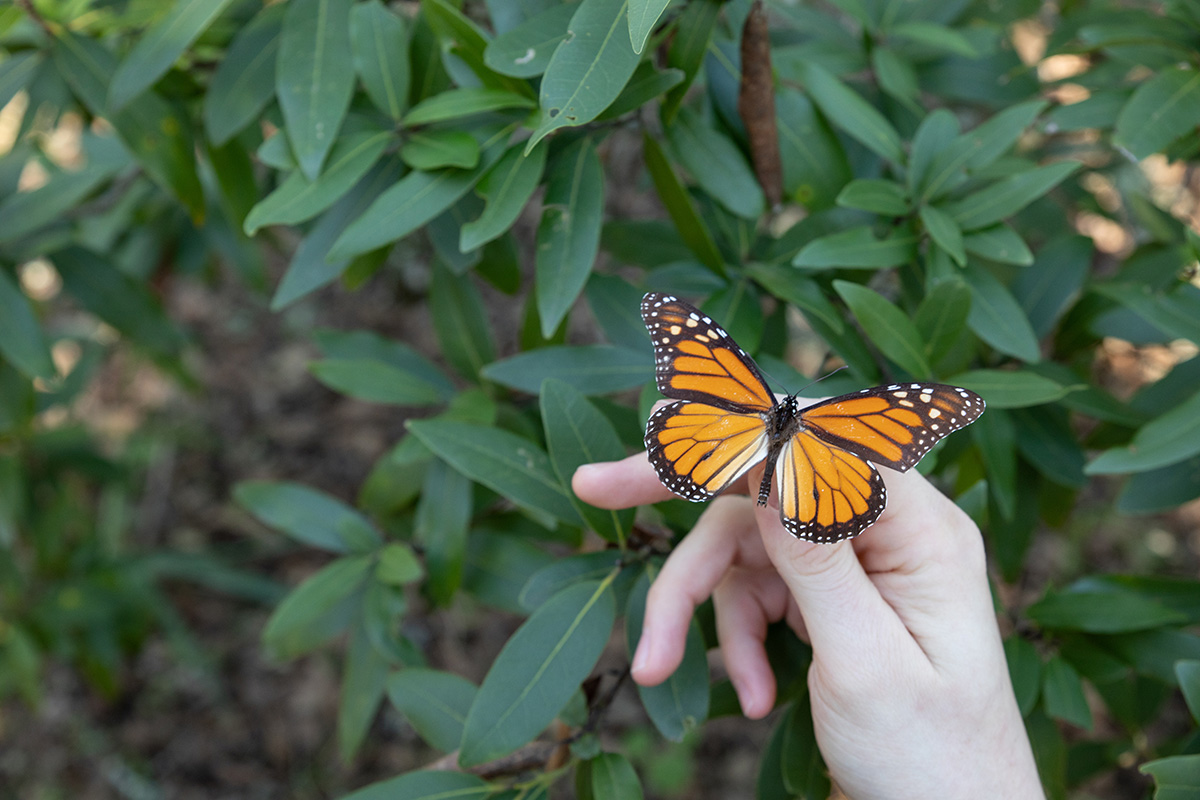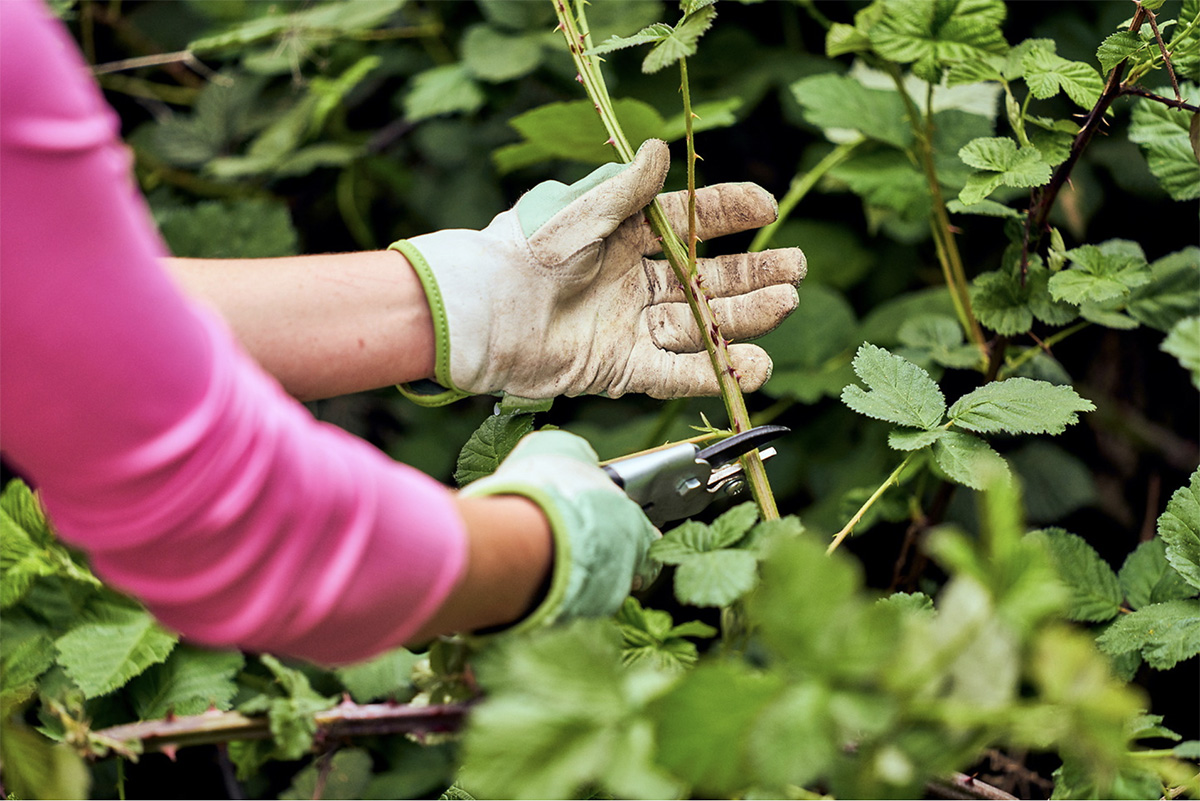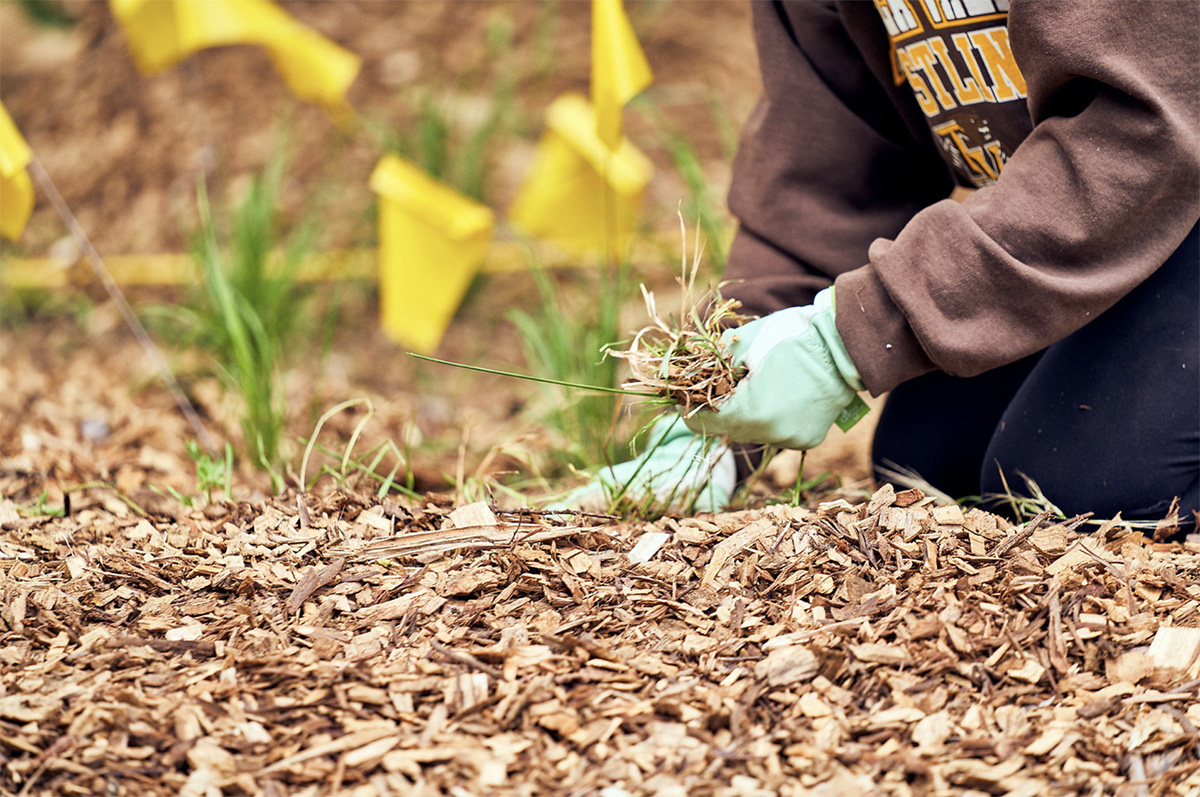| Size & Location | 2 acres, Penngrove, Sonoma County |
|---|---|
| Directions & Parking | Directions to SSU Campus; Park in Lot G |
| Current Weather | National Weather Service - SSU Campus |
Overview
 The Kenneth Stocking Native Plant Garden is a demonstration garden located on the Sonoma State University campus in Rohnert Park. It is organized into 15 plant communities representing the major floristic provinces of California. A butterfly garden overlays three of these plant communities. Facilities include seating areas, trails and virtual interpretive guides.
The Kenneth Stocking Native Plant Garden is a demonstration garden located on the Sonoma State University campus in Rohnert Park. It is organized into 15 plant communities representing the major floristic provinces of California. A butterfly garden overlays three of these plant communities. Facilities include seating areas, trails and virtual interpretive guides.
The gardens are open to everyone. Adjacent walking paths connect the gardens to campus, Rohnert Park, Cotati and Penngrove, making them an attractive destination for SSU classes, K-12 schools and community as part of field trips, tours, volunteer events, performances, and ceremonies.
Since its inception, SSU students have played a major role in the garden’s development and success. Not only have they designed, planted and carried out much of the work, but SSU students across campus visit the garden as part of courses, research and outdoor learning.
During the Covid pandemic, the garden fell into disrepair. In 2022, with inaugural gifts from donors and support from the schools of Science & Technology and Social Sciences, CEI began assisting with renovation of the garden by employing a manager and students to remove invasive species, maintain trails and develop educational opportunities.
Geology & Soils
 During the design of the garden in the early 1970s, Biology Professor Dr. Chuck Quibell recommended the addition of locally available specialized rock to simulate native substrate. Three hundred seventy-five yards of Sonoma metavolcanics, from a quarry on Petaluma Hill Road, were imported to the area that was to become the Oak Woodland Plant Community. Two hundred and fifty cubic yards of Franciscan shale, an old formation prevalent around the Occidental area, was appropriately placed in the Chaparral Plant Community. This rock was obtained from a quarry on Mark West Springs Road. Finally, 24 cubic yards of serpentine, imported from Calaveras County, were placed in the area which became the Serpentine Plant Community. Major rocks were placed as specimens (also included in the original design of the landscape architect). The native soil of our campus, adobe clay, supported the rest of the garden plantings, with the exception of the Copeland Creek Communities, where the soil naturally occurring along the creek was a rich sandy loam.
During the design of the garden in the early 1970s, Biology Professor Dr. Chuck Quibell recommended the addition of locally available specialized rock to simulate native substrate. Three hundred seventy-five yards of Sonoma metavolcanics, from a quarry on Petaluma Hill Road, were imported to the area that was to become the Oak Woodland Plant Community. Two hundred and fifty cubic yards of Franciscan shale, an old formation prevalent around the Occidental area, was appropriately placed in the Chaparral Plant Community. This rock was obtained from a quarry on Mark West Springs Road. Finally, 24 cubic yards of serpentine, imported from Calaveras County, were placed in the area which became the Serpentine Plant Community. Major rocks were placed as specimens (also included in the original design of the landscape architect). The native soil of our campus, adobe clay, supported the rest of the garden plantings, with the exception of the Copeland Creek Communities, where the soil naturally occurring along the creek was a rich sandy loam.
Hydrology
The gardens lie along the banks of Copeland Creek which runs from its headwaters at SSU's Fairfield Osborn Preserve, across campus and into the Laguna de Santa Rosa, a Ramsar wetland of international importance. Demonstration areas were developed during garden construction to support freshwater marsh, swamp and vernal pool habitats.
Plants
 The Native Plants Garden is laid out into 15 plant communities that represent the major floristic provinces of California, based on A California Flora (Munz 1968). The Butterfly Garden area overlays the areas of vernal pool, swamp and freshwater marsh.
The Native Plants Garden is laid out into 15 plant communities that represent the major floristic provinces of California, based on A California Flora (Munz 1968). The Butterfly Garden area overlays the areas of vernal pool, swamp and freshwater marsh.
1. Oak Woodland
2. Yellow Pine Forest
3. Douglas -Fir Forest
4. Mixed Evergreen Forest
5. Freshwater Marsh
6. Swamp
7. Grassland
8. Chaparral
9. Serpentine
10. Redwood Forest
11. Red Fir Forest
12. Riparian Forest
13. North Coast Coniferous Forest
14. Closed Cone Pine Forest
15. Vernal Pool
Animals
While garden interpretation focuses on insect pollinators, a wide variety of birds, mammals, amphibians and reptiles are found in the garden or nearby Copeland Creek. These have been documented as part of student research projects and species surveys. Notable fish and wildlife include Steelhead Trout and river otter.
History
 In 1973, Dr. Stocking, Professor of Biology and Environmental Studies, founded the Native Plant Botanical Garden as an educational project to demonstrate the concept of plant communities to students at Sonoma State University. One of the incentives for its creation was the political climate of the late sixties and early seventies, when the shortage of gasoline abruptly put an end to the longer field trips that classes regularly took to places such as Yosemite and Calaveras Big Trees. With support from University Administration, Architect Ken Anderson was employed to oversee the design and layout of the garden. His recommendation to create hills and berms as part of the garden design was followed in the construction process. The vast majority of the initial plantings came from stock purchased in one-gallon pots and planted by students. Other species were introduced from seed, purchased or collected, and then raised by university students or employees.
In 1973, Dr. Stocking, Professor of Biology and Environmental Studies, founded the Native Plant Botanical Garden as an educational project to demonstrate the concept of plant communities to students at Sonoma State University. One of the incentives for its creation was the political climate of the late sixties and early seventies, when the shortage of gasoline abruptly put an end to the longer field trips that classes regularly took to places such as Yosemite and Calaveras Big Trees. With support from University Administration, Architect Ken Anderson was employed to oversee the design and layout of the garden. His recommendation to create hills and berms as part of the garden design was followed in the construction process. The vast majority of the initial plantings came from stock purchased in one-gallon pots and planted by students. Other species were introduced from seed, purchased or collected, and then raised by university students or employees.
In 1993 master’s student Karen Tillinghast further developed a large area of the native plant garden as a butterfly garden for visitors to explore the relationship between plants and pollinators. A self-guided interpretive brochure and on-site signage she created as part of her thesis is now being updated into a digital interpretive experience that visitors can access with QR codes.
Since the first tree plantings in 1973, SSU students have played a major role in the development of the garden. Besides being a place to study biotic communities, the garden provided the additional dimension of offering students the opportunity for hands-on experience with plants. Dr. Stocking offered a course entitled “Native Plants, Indians, and Survival” in which students spent time as part of their coursework learning about native plant drought tolerance, medicinal uses, and edibility. Today, many classes continue to visit the garden for hands-on experiences learning about native flora and fauna -- including students from the Plant Propagation course who grow plants that are eventually planted by garden stewards.
Key organizations have also played important roles in providing volunteer labor and plant donations. These include Circuit Riders, Santa Rosa Garden Club, and California Flora Nursery.
Facilities
Garden facilities include seating areas, trails, signage, potting and storage sheds, and irrigation.
Management
The garden is maintained and developed by CEI in collaboration with SSU Landscaping. The majority of work is undertaken by SSU Lecturer and Garden Manager Heidi Herrmann. Each year, Heidi hires two students to work on the management team. The work is coordinated with the Copeland Creek restoration effort funded by Sonoma Water as part of the WATERS Collaborative. Volunteer labor and donations continue to be instrumental in garden development.